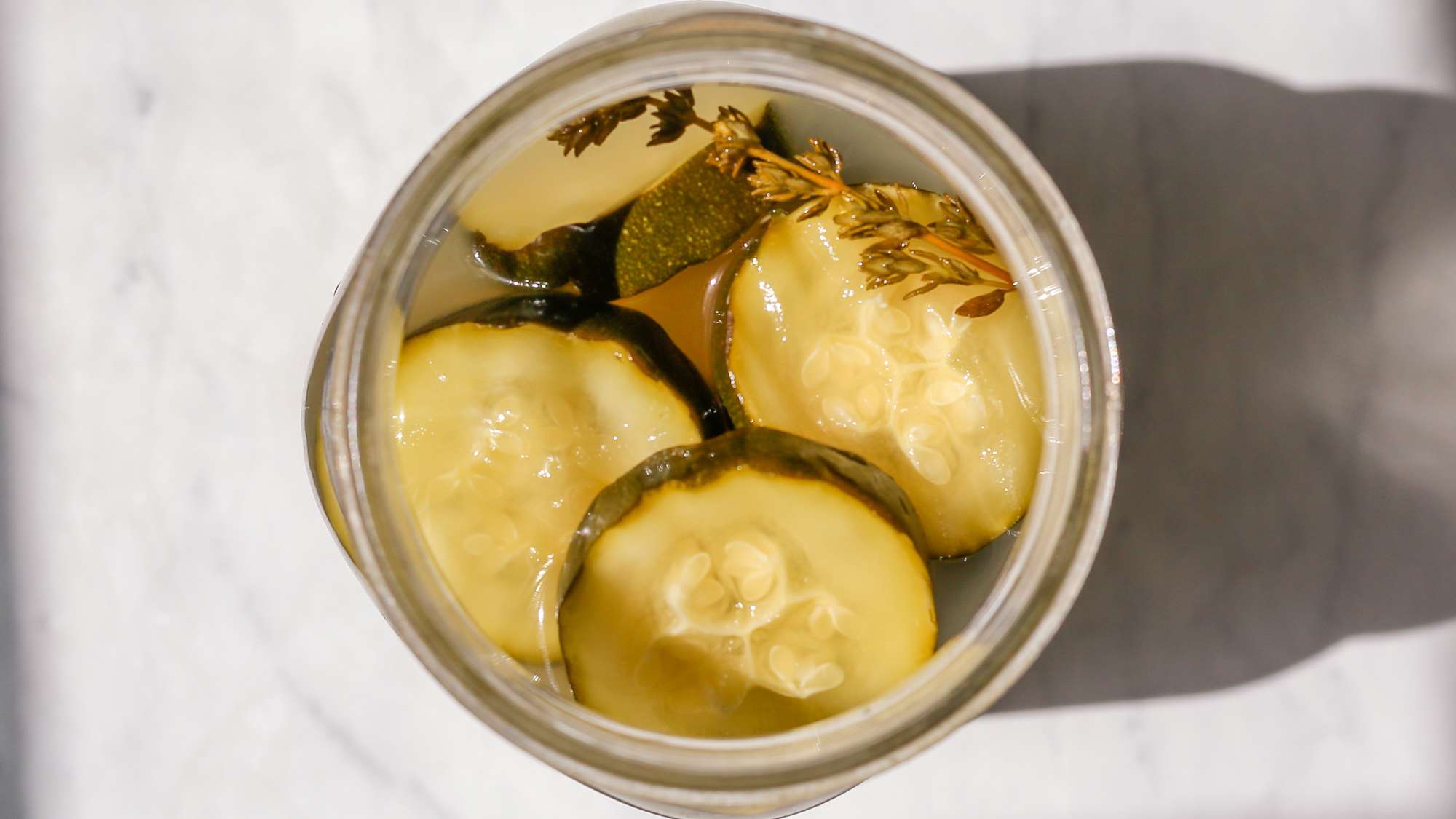So you’ve decided to take your gardening skills to the next level and try your hand at fermenting zucchini seeds. Whether you’re a seasoned green thumb or a complete novice, this beginner’s guide will walk you through the fascinating process of how to ferment zucchini seeds. From selecting the ripest seeds to creating the perfect fermenting environment, we’ve got you covered. Get ready to unlock the secrets of fermenting zucchini seeds and take your gardening adventures to a whole new level.
Selecting Zucchini Seeds
Choosing Healthy Zucchini Fruits
When it comes to selecting zucchini seeds, the first step is to choose healthy zucchini fruits. Look for zucchinis that are firm, with vibrant green color and smooth skin. Avoid selecting fruits that are overly ripe, as their seeds may not be of the best quality. Additionally, it is recommended to select zucchinis that are grown organically to ensure the seeds are free from any harmful chemicals or pesticides.
Harvesting Zucchini Seeds
To harvest zucchini seeds, start by allowing a few zucchinis to fully ripen on the vine. These zucchinis should be left on the plant until they have turned yellow and their skin has become tough. Once they reach this stage, carefully cut the zucchinis from the plant, making sure to leave some stem attached. This will help in the drying process later on. Bring the harvested zucchinis indoors to start extracting the seeds.
Seed Cleaning and Preparation
After harvesting the zucchinis, it is essential to clean and prepare the seeds for fermentation. Begin by cutting the zucchinis open lengthwise. Use a spoon to scoop out the seeds along with the surrounding pulp. Place the seeds and pulp into a clean container. Fill the container with water, and using your hand, separate the seeds from the pulp by gently rubbing them together. The seeds will sink to the bottom while the pulp and any debris will float. Pour off the pulp and debris, repeating this process a few times until the seeds are clean. Now, you are ready to start the fermentation process.
Understanding Fermentation
What is Fermentation?
Fermentation is a natural process that utilizes beneficial bacteria and yeast to break down organic substances. In the context of zucchini seed fermentation, it involves creating an environment favorable for the growth of specific beneficial microorganisms. These microorganisms help to improve seed quality by breaking down the gelatinous coating around the seeds, making them easier to store and germinate.
Why Ferment Zucchini Seeds?
Fermenting zucchini seeds offers numerous advantages for both home gardeners and commercial growers. Firstly, it helps to prevent seed-borne diseases by neutralizing pathogens that might be present in or on the seeds. Additionally, fermentation promotes the removal of substances that can inhibit germination, resulting in higher germination rates. Fermentation also helps increase seed storage life, allowing seeds to maintain their viability for a longer period of time.
Benefits of Fermenting Zucchini Seeds
The benefits of fermenting zucchini seeds go beyond disease prevention and improved germination rates. Fermentation also enhances seed vigor, ensuring that the resulting plants are stronger and healthier. By breaking down the gelatinous coating, fermentation makes the seeds more resistant to rotting and fungal infections during storage. Furthermore, it promotes the exchange of beneficial bacteria between seeds, improving soil health when the fermented seeds are planted.

Preparing for Fermentation
Gathering Equipment
Before embarking on the zucchini seed fermentation process, it is important to gather the necessary equipment. You will need a clean container with a lid that can hold both the seeds and fermentation solution. A glass or food-grade plastic container is ideal, as materials like metal can react with the fermentation solution. Additionally, you will need a strainer or mesh screen to rinse the fermented seeds later on, as well as a clean towel or paper towels for drying.
Creating a Fermentation Solution
To create the fermentation solution, you will need non-chlorinated water. Chlorine can inhibit fermentation, so it is crucial to use clean, filtered water or allow tap water to sit out overnight to remove any chlorine content. Dissolve about 1 tablespoon of salt per cup of water to create a saline solution. This saltwater solution helps create the ideal environment for beneficial bacteria to thrive and break down the gelatinous coating around the seeds.
Fermenting Zucchini Seeds
Soaking Zucchini Seeds
Start the fermentation process by placing the cleaned zucchini seeds in the container. Pour the prepared saline solution over the seeds, making sure they are completely submerged. If necessary, use a clean weight or plate to keep the seeds submerged. It is important to avoid any exposure to air, as this can lead to mold growth. Cover the container with a lid, leaving it slightly ajar to allow gases to escape during the fermentation process.
Fermentation Duration
The fermentation process usually takes about 3 to 5 days, depending on the temperature and the specific microorganisms present. It is recommended to keep the container in a warm location, ideally between 70-80°F (21-27°C), for optimal fermentation. The liquid may become bubbly or slightly cloudy during this time, which indicates that fermentation is occurring. Be sure to monitor the container regularly to ensure that the seeds are still submerged and to check for any signs of mold.
Monitoring the Fermentation Process
While the zucchini seeds are undergoing fermentation, it is essential to regularly check on the progress. Look for any signs of mold growth on the surface of the liquid or on the seeds themselves. If mold is present, carefully remove the affected seeds and rinse the rest thoroughly to prevent further contamination. Also, pay attention to any foul odors, as this could indicate that the fermentation process has gone awry. If everything appears healthy, continue to the next step once the fermentation duration is complete.

Rinsing and Drying
Rinsing the Fermented Seeds
After the desired fermentation duration has been reached, it is time to rinse the fermented zucchini seeds. Pour the seeds and liquid through a fine mesh screen or strainer to separate the liquid from the seeds. Rinse the seeds thoroughly with clean, non-chlorinated water to remove any leftover residue. Gently agitate the seeds with your hands as you rinse to ensure that all traces of the saline solution and any remaining debris are washed off. Repeat this process a few times until the water runs clear.
Drying the Seeds
Once the seeds have been properly rinsed, spread them out in a single layer on a clean towel or paper towels. Allow them to air-dry completely in a well-ventilated area away from direct sunlight. It is important to ensure that the seeds are fully dry before storage, as any moisture left can lead to mold or rot. Depending on the humidity and temperature, this drying process can take anywhere from a few days to a week.
Testing Seed Viability
Conducting a Germination Test
Before storing or planting the fermented zucchini seeds, it is advisable to conduct a germination test to determine their viability. Take a small sample of the dried seeds and place them on a damp paper towel or in a seed-starting tray filled with moist growing medium. Keep the seeds consistently moist and in a warm location, as this will encourage germination. After a week or two, check to see how many seeds have sprouted. This will give you an idea of the germination rate and overall seed quality.
Interpreting Germination Results
When interpreting the germination results, it is important to note the percentage of seeds that have successfully sprouted. If the germination rate is high, it indicates that the fermentation process has been effective in improving seed quality. However, if the germination rate is low, it may suggest that the fermentation process was not successful or that the seeds were not of high quality to begin with. In such cases, it may be necessary to repeat the fermentation process or consider obtaining new seed stock.

Storing Fermented Zucchini Seeds
Proper Storage Conditions
To maintain the quality and viability of fermented zucchini seeds, proper storage conditions are crucial. Store the dried seeds in a cool, dark, and dry environment, such as an airtight container or a glass jar with a tight-fitting lid. Ideally, the storage temperature should be between 32-41°F (0-5°C) to prevent the seeds from deteriorating. It is also important to protect the seeds from fluctuations in temperature and humidity, as these can shorten their storage life.
Maintaining Seed Quality
To ensure the longevity of your fermented zucchini seeds, it is best to store them away from any sources of moisture, light, and heat. Moisture can lead to mold growth and seed damage, while exposure to light and heat can reduce seed viability over time. Regularly check stored seeds for any signs of deterioration, such as mold, pests, or foul odors. If any issues arise, remove the affected seeds immediately to prevent further damage.
Utilizing Fermented Zucchini Seeds
Planting Fermented Seeds
The primary use of fermented zucchini seeds is for planting in your garden or growing space. When it’s time to plant, prepare the soil by loosening it and removing any weeds or debris. Make small holes or furrows in the soil and carefully place the fermented seeds, ensuring they are spaced evenly. Cover the seeds with a thin layer of soil and gently water the area. Maintain adequate moisture throughout the germination and seedling stages to promote healthy growth.
Saving Seeds for Future Use
Another great benefit of fermenting zucchini seeds is the ability to save them for future use. Once you have successfully fermented and dried the seeds, store them following the proper storage conditions mentioned earlier. Label the storage container with the date and variety of the zucchini seeds to ensure you can easily identify them in the future. With proper storage, these seeds can be saved and used for planting in subsequent growing seasons.

Troubleshooting Fermentation Issues
Common Problems and Solutions
While the zucchini seed fermentation process is generally straightforward, there can be some common issues that arise. One common problem is the presence of mold during the fermentation process. If mold is detected, it is important to remove the affected seeds immediately, rinse the rest thoroughly, and increase the frequency of monitoring. Another issue could be a foul odor emanating from the fermentation container, indicating a potential spoilage issue. If this occurs, terminate the fermentation process and discard the seeds.
Avoiding Mold and Spoilage
To minimize the risk of mold and spoilage during fermentation, it is important to maintain cleanliness throughout the process. Ensure that all equipment and containers used are thoroughly cleaned and sterilized before starting fermentation. Use non-chlorinated water and prepare the saline solution accurately to create an environment conducive to beneficial fermentation microorganisms. Additionally, be diligent in checking for any signs of mold or foul odors during the fermentation duration to catch any issues early on.
Alternative Methods of Seed Fermentation
Dry Fermentation
In addition to liquid fermentation, dry fermentation is another method for fermenting zucchini seeds. Dry fermentation involves removing the seeds from the zucchinis, cleaning them as usual, and then allowing the seeds to air-dry completely. Once dry, store the seeds in a breathable container, such as a paper bag, for approximately 2-4 weeks. During this time, the beneficial microorganisms present on the seeds naturally break down the gelatinous coating. After the fermentation period, rinse the seeds to remove any residue before drying and storing them.
Liquid Fermentation
Liquid fermentation, as described in this guide, is the most common method for fermenting zucchini seeds. However, alternative liquid fermentation methods exist, such as using different saline solutions or adding additional ingredients to the fermentation solution. Some gardeners choose to add a small amount of natural fermentation starter or inoculant containing beneficial microorganisms to accelerate the fermentation process. These alternative methods can be explored and experimented with to find the approach that works best for your specific needs and preferences.
Overall, fermenting zucchini seeds is an effective and beneficial process that enhances seed quality and ensures better germination rates. By following the steps outlined in this article, you can successfully ferment your own zucchini seeds and enjoy the benefits of healthier, more vigorous plants in your garden. So don’t hesitate to give it a try and experience the wonders of zucchini seed fermentation for yourself!



